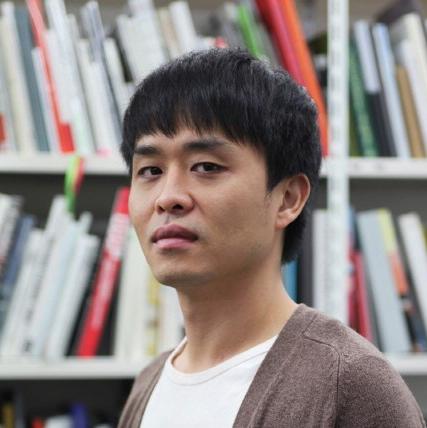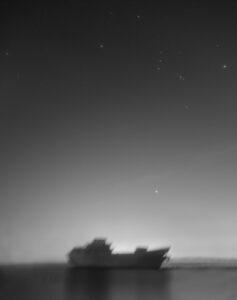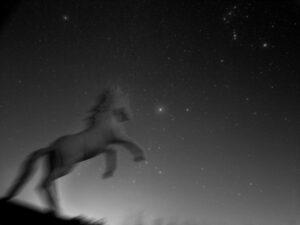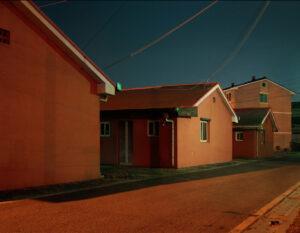






Kim Taedong graduated from Chung-Ang University’s Department of Photography (2007) and obtained a Master’s Degree in Photography from the same graduate school (2013).
Kim Taedong uses his own formative language as light, lighting, time, and frame, which are the aesthetic evaluation criteria in documentary photography and straight photograph as a medium to record facts, while artificially creating a site-specific situation.
He has been working to reveal the meaning of people and space by directing. Whereas traditional photography in the past merely relied on camera technology to capture objects, Kim Taedong’s photographs show a semi-constructive attitude of artificially directing a part of reality to capture the artist’s artistic intentions. Therefore, it shows the characteristics of the camera and photography well.
- Works for Sale
- Artistic Career
- World of Work
- Activity
Semi-Constructed Photograph
Semi-Constructed Photograph
Solo Exhibitions (Brief)
The solo exhibition ‘Day Break’ (2011~) shooting people who’ve met by chance in urban spaces at late-night was held at Gallery lux(2012, Seoul, Korea) and Ilwoo Space(2013, Seoul, Korea).
The exhibition held at Amado Art Space(2019, Seoul, Korea) and UARTSPACE(2020, Seoul, Korea) was showcased the series of ‘Rifling’ (2015~), one of the war-related works, and ‘PLANETES’ (2017~) that show consideration of the stars and shaky targets.
Group Exhibitions (Brief)
Kim Taedong has participated in a wide range of group exhibitions held at Culture Station Seoul 284(Seoul, Korea), National Museum of Modern and Contemporary Art(Seoul, Korea), Hara Museum(Tokyo, Japan), Ullens Center for Contemporary Art(Beijing, China), Art Sonje Center(Seoul, Korea), and Buk Seoul Museum of Art(Seoul, Korea).
Awards (Selected)
Kim Taedong was awarded at the 6th Amado Photography Award(Amado Art Space, Korea), the 4th Ilwoo Photography Award(Ilwoo Foundation, Korea),and was selected the final artist of the year of the 4th KT&G SKOPF(KT&G Sangsangmadang, Korea).
Collections (Selected)
His works are in collections of various museums such as Gyeonggi Museum of Modern Art(Ansan, Korea), Smith College Museum of Art(Massachusetts, USA), SK Ecoplant(Seoul, Korea), ILWOO Foundation(Seoul, Korea), Australian War Memoria(Canberra, Australia) and the National Museum of Contemporary Art(Gwacheon, Korea).
Semi-Constructed Photograph
Semi-Constructed Photograph
Originality & Identity
The artist, Kim Taedong, makes an effort to capture extreme situations and the ordinary daily life of the people in an unusual atmosphere. He does not use special materials or subjects for his art. However, he just puts attention to what he sees around in daily life, contemplating how to present the artworks.
He captures various boundary areas like between city centers and the outskirts as well as the time between days and nights. Similarly, he demonstrates the divided border area between North and South Korea or the history between the past and the future. In any kind of place, there exists an uneasy and awkward atmosphere floating on the border. In this state, people always exist like endless stars.
“It is still valid that uniqueness of perspective, even if there is no original photograph itself.
It may be the exact same photograph or a completely different one.”
Kim Taedong has received a lot of attention for his ‘Day Break’ (2011~ ) series, which expresses the strange atmosphere evoked by the urban space at dawn. After midnight the city illuminated only by artificial light becomes a stage different from the lively daytime routine. He wanders around Seoul at nighttime for filming inspiration, selects an appropriate place, and invites passerbies who suddenly appear in his filming and asks them for a pose. The people who come out in his photography are normal people who pass by during his art activities.
In the ‘Day Break’ series, the characters and spaces in the photos form an unbalanced confrontation, and a gap is widened so that unfamiliar tension and discomfort prevent premature understanding. The sleek sense of the perfectly tight confrontation does not deliver any meaning to the audience, but it catches the eye intensely. Even though the people’s poses are fixed, the photos of them seem to look around the city and out of the city with their shimmering eyes making them vivid portraits at night.
In the ‘Rifling’ (2015~ ) series, which Kim Taedong has worked on as part of the DMZ project, he recorded the lives of people in the Gyeongwonseon area and the scars of the Korean war. Once ‘Rifling’ recorded the unknown daily life after the war, the ‘Planetes’ (2017~ ) series poetically documented the quiet podium of the ruins of the war together with the stars in his work. When a photo is taken in line with a setting that tracks the motion of the celestial body, the stationary object vibrates as much as the moving trajectory of the stars, and the moving star stops. The photograph, in which the eternal universe and the traces of finite human beings are taken together, superimposes the countless times of determination on one screen.
In his photographs, there is always an eerie tension, and a slightly nervous mood as if something is about to happen. The image looks like a ghost that suddenly appears and wanders on a still screen while running away or chasing after something. The distance between the audience and the work is also not easy to narrow. This means that the lives of the people are hidden in the photos, standing far away, which leaves keen-sighted people to their own imagination.
Style & Contents
Though pre-preparation is an important task for photographers, trial and error cannot be entirely avoided. However, not only due to Kim Taedong’s sensual pursuit of the image but also because his work is so intuitive that it is difficult to describe the tenacious working plan he had anticipated.
The artist draws his maps or unfolds maps to plan specific travel routes, collects multiple images of destinations, and examines as much information as possible about historical sites. Also, he writes working notes meticulously, and records and organizes the process of filming and results in detail.
However, the determinants which define the working direction come from the visual feeling. The artist follows many inspirations such as many reference images, including works by foreign artists, pre-taken photos, and even from real places. He chases the feeling that he wants to get. It is not a specific work, but an inspiration for what he looks at.
What we can easily overlook due to the strong presence of the characters is that places, not people, are built up in Kim Taedong’s photo. The artist has focused on spaces from the beginning of his works. 〈 Tank 〉 (2007), which photographed an indoor aquarium, 〈 Man-Made 〉 (2008), which contains huge artificially created spaces and 〈 Symetrial 〉 (2010) which filmed the scenery and people of a Korean town, called Flushing, New York. These are a series of captured works found somewhere in space.
“I would like to observe the meaning of the space I live in and what its essence looks like.”
However, when he started working in Flushing also the characters included in his works in the space started to become more important. “As most of the things in the city are for human beings,” he naturally started taking portraits. Also, Kim Taedong says, ‘sometimes a single portrait photo becomes a ‘breakthrough’ showing complex contents and situation at once. The artist’s ceaseless view penetrates deeply into the nature of the city and the people captured by the photograph.
Constancy & Continuity
The artist, Kim Taedong, is a photographer who possesses expressive capabilities basis on a solid filming style. In his new visual experiences, Kim Taedong occupies a distinctive position among the leading contemporary photographers. The artist accurately grasps the space that is the stage of the photo, boldly approaches a stranger or place, and drives the scene in the direction how he wants.
The visualizing power in his photographs’ tense is outstanding. It shows the artist’s technique to capture ‘nothing’ in a straight line and turn it into a scene with a bizarre story in an outstanding mood.
About 10 years ago, some promising artists were selected as ‘outstanding’ at the National Museum of Modern and Contemporary Art, at the regular exhibition named 《Young Mosquito 2013》. It reflected the perspective of contemporary art using various art forms and approaches including installations and video art. Among the nine artist participants, Kim Taedong was the only one who worked with purely authentic photography as a medium. It shows the inference of his art and workpieces are established not only in the Korean Photography industry but also in the wholistic transforming art world strongly.
The young writer who made a fresh impact with the representative works 〈 Day Break 〉 and 〈 Break Days 〉 now became a senior-level artist in his middle age (mid-40s). Further, the way he presents his work remains provocative. Hence, it is the ultimate reason why the audience is looking forward to the “new city” that the artist Kim Taedong will show us.
Semi-Constructed Photograph
Semi-Constructed Photograph
Semi-Constructed Photograph
Semi-Constructed Photograph
- Works for Sale
- Artistic Career
- World of Work
- Activity
Semi-Constructed Photograph
Semi-Constructed Photograph
Solo Exhibitions (Brief)
The solo exhibition ‘Day Break’ (2011~) shooting people who’ve met by chance in urban spaces at late-night was held at Gallery lux(2012, Seoul, Korea) and Ilwoo Space(2013, Seoul, Korea).
The exhibition held at Amado Art Space(2019, Seoul, Korea) and UARTSPACE(2020, Seoul, Korea) was showcased the series of ‘Rifling’ (2015~), one of the war-related works, and ‘PLANETES’ (2017~) that show consideration of the stars and shaky targets.
Group Exhibitions (Brief)
Kim Taedong has participated in a wide range of group exhibitions held at Culture Station Seoul 284(Seoul, Korea), National Museum of Modern and Contemporary Art(Seoul, Korea), Hara Museum(Tokyo, Japan), Ullens Center for Contemporary Art(Beijing, China), Art Sonje Center(Seoul, Korea), and Buk Seoul Museum of Art(Seoul, Korea).
Awards (Selected)
Kim Taedong was awarded at the 6th Amado Photography Award(Amado Art Space, Korea), the 4th Ilwoo Photography Award(Ilwoo Foundation, Korea),and was selected the final artist of the year of the 4th KT&G SKOPF(KT&G Sangsangmadang, Korea).
Collections (Selected)
His works are in collections of various museums such as Gyeonggi Museum of Modern Art(Ansan, Korea), Smith College Museum of Art(Massachusetts, USA), SK Ecoplant(Seoul, Korea), ILWOO Foundation(Seoul, Korea), Australian War Memoria(Canberra, Australia) and the National Museum of Contemporary Art(Gwacheon, Korea).
Semi-Constructed Photograph
Semi-Constructed Photograph
Originality & Identity
The artist, Kim Taedong, makes an effort to capture extreme situations and the ordinary daily life of the people in an unusual atmosphere. He does not use special materials or subjects for his art. However, he just puts attention to what he sees around in daily life, contemplating how to present the artworks.
He captures various boundary areas like between city centers and the outskirts as well as the time between days and nights. Similarly, he demonstrates the divided border area between North and South Korea or the history between the past and the future. In any kind of place, there exists an uneasy and awkward atmosphere floating on the border. In this state, people always exist like endless stars.
“It is still valid that uniqueness of perspective, even if there is no original photograph itself.
It may be the exact same photograph or a completely different one.”
Kim Taedong has received a lot of attention for his ‘Day Break’ (2011~ ) series, which expresses the strange atmosphere evoked by the urban space at dawn. After midnight the city illuminated only by artificial light becomes a stage different from the lively daytime routine. He wanders around Seoul at nighttime for filming inspiration, selects an appropriate place, and invites passerbies who suddenly appear in his filming and asks them for a pose. The people who come out in his photography are normal people who pass by during his art activities.
In the ‘Day Break’ series, the characters and spaces in the photos form an unbalanced confrontation, and a gap is widened so that unfamiliar tension and discomfort prevent premature understanding. The sleek sense of the perfectly tight confrontation does not deliver any meaning to the audience, but it catches the eye intensely. Even though the people’s poses are fixed, the photos of them seem to look around the city and out of the city with their shimmering eyes making them vivid portraits at night.
In the ‘Rifling’ (2015~ ) series, which Kim Taedong has worked on as part of the DMZ project, he recorded the lives of people in the Gyeongwonseon area and the scars of the Korean war. Once ‘Rifling’ recorded the unknown daily life after the war, the ‘Planetes’ (2017~ ) series poetically documented the quiet podium of the ruins of the war together with the stars in his work. When a photo is taken in line with a setting that tracks the motion of the celestial body, the stationary object vibrates as much as the moving trajectory of the stars, and the moving star stops. The photograph, in which the eternal universe and the traces of finite human beings are taken together, superimposes the countless times of determination on one screen.
In his photographs, there is always an eerie tension, and a slightly nervous mood as if something is about to happen. The image looks like a ghost that suddenly appears and wanders on a still screen while running away or chasing after something. The distance between the audience and the work is also not easy to narrow. This means that the lives of the people are hidden in the photos, standing far away, which leaves keen-sighted people to their own imagination.
Style & Contents
Though pre-preparation is an important task for photographers, trial and error cannot be entirely avoided. However, not only due to Kim Taedong’s sensual pursuit of the image but also because his work is so intuitive that it is difficult to describe the tenacious working plan he had anticipated.
The artist draws his maps or unfolds maps to plan specific travel routes, collects multiple images of destinations, and examines as much information as possible about historical sites. Also, he writes working notes meticulously, and records and organizes the process of filming and results in detail.
However, the determinants which define the working direction come from the visual feeling. The artist follows many inspirations such as many reference images, including works by foreign artists, pre-taken photos, and even from real places. He chases the feeling that he wants to get. It is not a specific work, but an inspiration for what he looks at.
What we can easily overlook due to the strong presence of the characters is that places, not people, are built up in Kim Taedong’s photo. The artist has focused on spaces from the beginning of his works. 〈 Tank 〉 (2007), which photographed an indoor aquarium, 〈 Man-Made 〉 (2008), which contains huge artificially created spaces and 〈 Symetrial 〉 (2010) which filmed the scenery and people of a Korean town, called Flushing, New York. These are a series of captured works found somewhere in space.
“I would like to observe the meaning of the space I live in and what its essence looks like.”
However, when he started working in Flushing also the characters included in his works in the space started to become more important. “As most of the things in the city are for human beings,” he naturally started taking portraits. Also, Kim Taedong says, ‘sometimes a single portrait photo becomes a ‘breakthrough’ showing complex contents and situation at once. The artist’s ceaseless view penetrates deeply into the nature of the city and the people captured by the photograph.
Constancy & Continuity
The artist, Kim Taedong, is a photographer who possesses expressive capabilities basis on a solid filming style. In his new visual experiences, Kim Taedong occupies a distinctive position among the leading contemporary photographers. The artist accurately grasps the space that is the stage of the photo, boldly approaches a stranger or place, and drives the scene in the direction how he wants.
The visualizing power in his photographs’ tense is outstanding. It shows the artist’s technique to capture ‘nothing’ in a straight line and turn it into a scene with a bizarre story in an outstanding mood.
About 10 years ago, some promising artists were selected as ‘outstanding’ at the National Museum of Modern and Contemporary Art, at the regular exhibition named 《Young Mosquito 2013》. It reflected the perspective of contemporary art using various art forms and approaches including installations and video art. Among the nine artist participants, Kim Taedong was the only one who worked with purely authentic photography as a medium. It shows the inference of his art and workpieces are established not only in the Korean Photography industry but also in the wholistic transforming art world strongly.
The young writer who made a fresh impact with the representative works 〈 Day Break 〉 and 〈 Break Days 〉 now became a senior-level artist in his middle age (mid-40s). Further, the way he presents his work remains provocative. Hence, it is the ultimate reason why the audience is looking forward to the “new city” that the artist Kim Taedong will show us.




